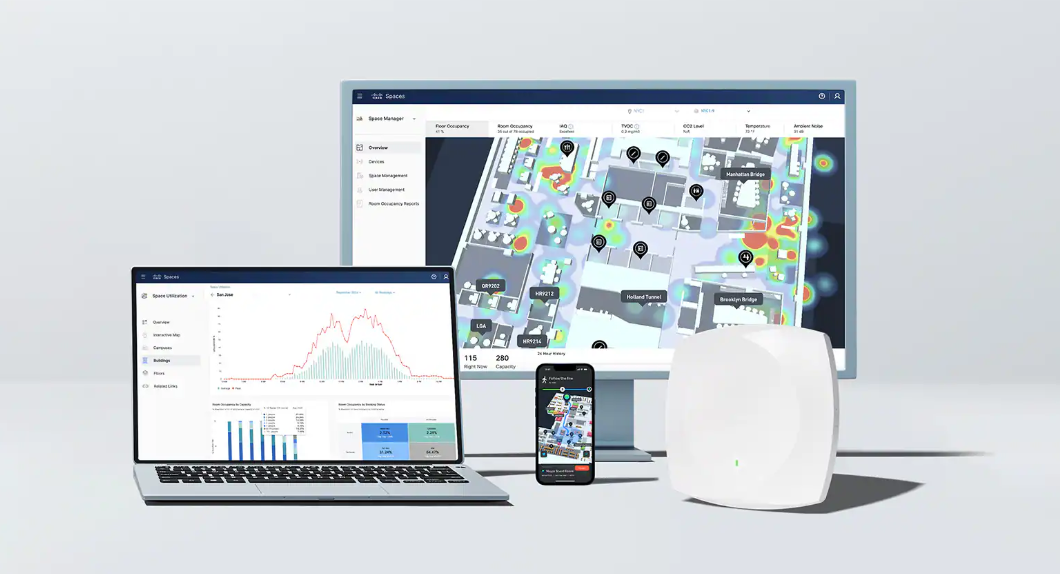
































In today’s increasingly connected world, selecting the right wireless access points (APs) and wireless LAN controllers is critical for enterprises, midsize businesses, and small organizations. Cisco’s wireless solutions are designed to meet diverse requirements, offering robust performance, flexibility, and adherence to the latest wireless standards, including Wi-Fi 6 (802.11ax) and Wi-Fi 6E. This guide provides an in-depth comparison of Cisco’s wireless access points to help you identify the best fit for your specific environment.
Cisco Access Points (APs) are categorized based on their deployment scenarios, radio configurations, and technological capabilities. From small offices to mission-critical deployments, Cisco offers a tailored solution for every need.
Wi-Fi Standards Compliance: Supports Wi-Fi 6 (802.11ax) and Wi-Fi 6E for enhanced speed, efficiency, and capacity.
Advanced Radio Configurations: Multiple radios with support for various frequencies like 2.4 GHz, 5 GHz, and 6 GHz.
Environmental Adaptability: Models designed for indoor, outdoor, and industrial use.
IoT and BLE Integration: Many models include Bluetooth Low Energy (BLE) and IoT radios for extended functionality.
CleanAir Technology: Reduces interference and optimizes performance in high-density environments.
The following table highlights the features of key Cisco Catalyst AP models, segmented by use case and operational flexibility:
| Model | Key Features | Best for | Special Features |
|---|---|---|---|
| Catalyst 9136 | Six radios, Wi-Fi 6/6E certified, built-in environmental sensors | High-density environments | Automatic power management, band steering |
| Catalyst 9166 | Industry-leading Wi-Fi 6E, five radios, environmental sensors | Mission-critical deployments | CleanAir Pro, cloud or on-premises management |
| Catalyst 9164 | Wi-Fi 6E, five radios, IoT radio | Medium and small-sized deployments | Operational flexibility with CleanAir Pro |
| Catalyst 9162 | Wi-Fi 6E, five radios | Small-sized deployments | Cost-effective with IoT integration |
| Catalyst 9163E | Outdoor-ready, Wi-Fi 6E, five radios, external antennas | Outdoor environments | Built-in GPS, CleanAir Pro, rugged design |
| Catalyst 9105w/i | Wi-Fi 6, Bluetooth 4.1 | Small to medium networks | Multidwelling units, controller-based |
| Catalyst 9115 | Wi-Fi 6 certified, multigigabit support | Small to medium enterprises | Low-cost, efficient performance |
| Catalyst 9120 | High-density optimization, Wi-Fi 6 certified | Medium to large enterprises | Supports multigigabit Ethernet |
| Catalyst 9130 | Four radios, mission-critical performance | High-performance, mission-critical needs | Cisco RF ASIC, Flexible Radio Assignment |
| Catalyst 9124 Series | Wi-Fi 6, three radios with various antenna configurations | Rugged, outdoor, and directional needs | Internal, external, or directional antenna options |
Cisco offers specialized APs designed for rugged environments, such as manufacturing plants and outdoor installations:
| Model | Environment | Key Features | Unique Capabilities |
|---|---|---|---|
| Catalyst IW9167E | Industrial, outdoor | Wi-Fi 6E, GNSS, BLE radio | Shockproof, IP66/67 rated |
| Catalyst IW9167I | Harsh outdoor | Built-in antennas, extreme temperature support | Rugged for extreme weather |
| Catalyst IW9165E/D | Compact industrial, outdoor | Dual radios, GNSS, BLE | Rolling stock certified, IP30/67, DIN-rail mount |
To determine the ideal access point for your organization, consider the following factors:
Deployment Environment:Indoor, outdoor, or industrial.
Network Size and Density:Small businesses vs. enterprises with high-density needs.
Performance Requirements:Wi-Fi 6 vs. Wi-Fi 6E for future-proofing.
Operational Model:Cloud-managed or on-premises control.
Wireless controllers complement APs by managing network configurations and ensuring optimal performance. Cisco’s range of controllers, such as theCisco Catalyst 9800 Series, offers features like:
Centralized Management:Simplifies network control for large deployments.
Enhanced Security:Integrated threat detection and response.
Scalability:Adapts to growing organizational needs.
1. What is the difference between Wi-Fi 6 and Wi-Fi 6E?
Wi-Fi 6E extends Wi-Fi 6 capabilities to the 6 GHz band, offering additional spectrum for faster speeds and reduced interference.
2. Can Cisco Catalyst APs operate in harsh conditions?
Yes, models like the Catalyst IW9167 are designed for rugged environments, with features like IP66/67 ratings and shock resistance.
3. What is Cisco CleanAir Technology?
It is a feature that monitors and mitigates RF interference to improve wireless performance.
4. Are these APs future-proof?
Most Cisco APs support Wi-Fi 6 and 6E, ensuring compatibility with future devices.
5. Which model is ideal for small businesses?
Catalyst 9105w/i or Catalyst 9162 are excellent options for small networks.
6. Do Cisco APs support IoT integration?
Yes, many models include IoT radios for seamless device connectivity.
Cisco’s comprehensive range of wireless access points and controllers ensures that there’s a solution for every business size and environment. By leveraging cutting-edge technologies like Wi-Fi 6/6E and environmental sensors, Cisco APs deliver exceptional performance and reliability.
Cisco Wireless AP and Controllers
For Cisco product list and quote, please visit: https://www.hi-network.com/categories/cisco or contact us at www.hi-network.com (Email: [email protected])
 Hot Tags :
hot products
Hot Tags :
hot products